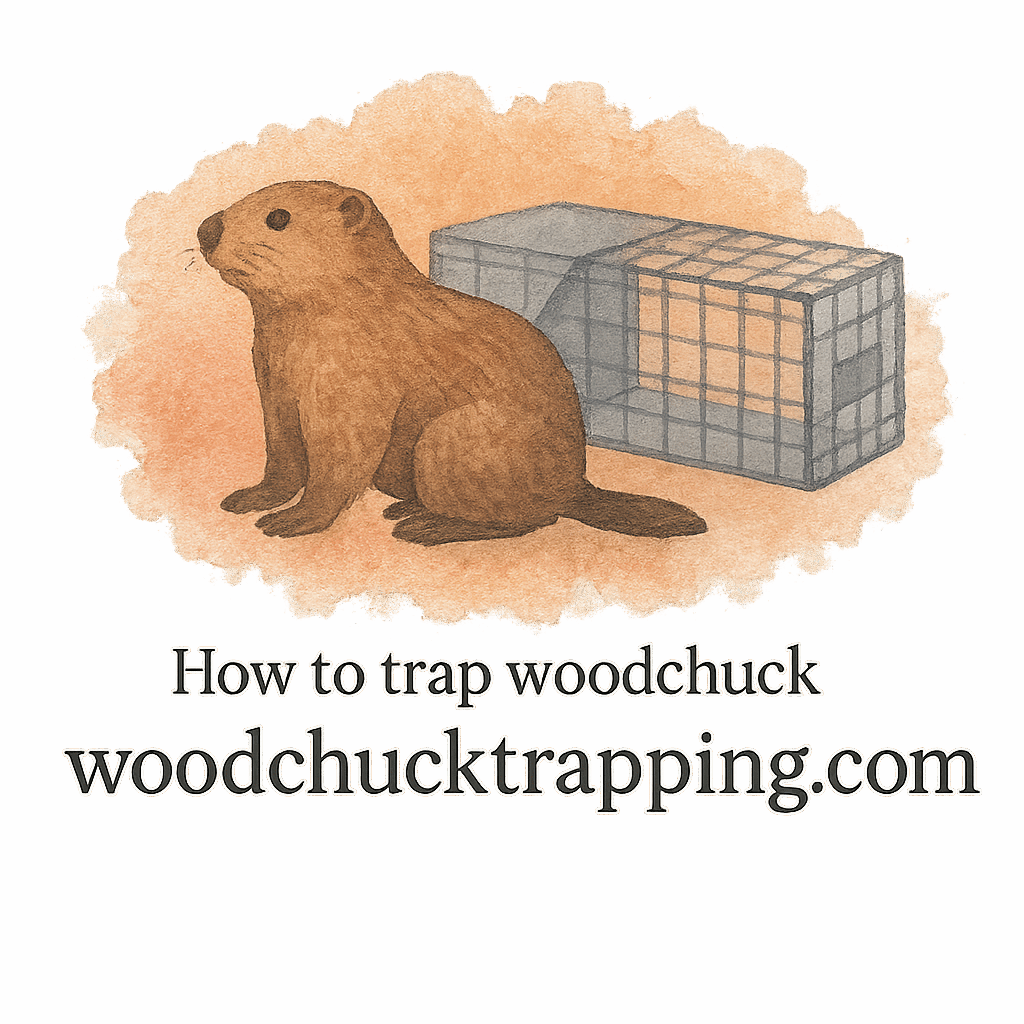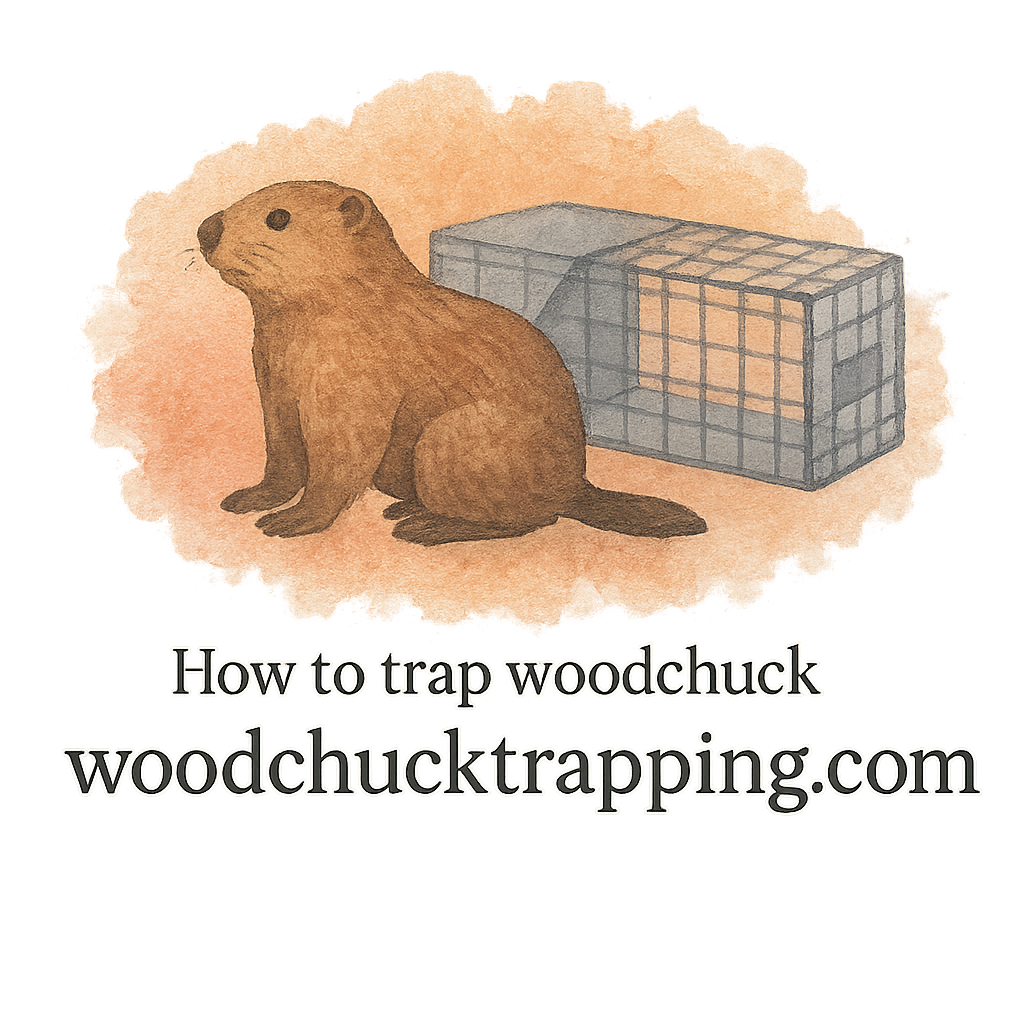Introduction
If you’ve ever looked out into your yard and spotted mysterious burrows or half-eaten plants, chances are a woodchuck (also called a groundhog) has made itself at home. These critters might look harmless, but they can wreak havoc on gardens, landscaping, and even building foundations. Trapping is often the most effective solution—but here’s the catch: many homeowners make mistakes that cost them time, effort, and sometimes even damage to their property.
In this guide, we’ll break down 7 common mistakes in woodchuck trapping techniques and show you exactly how to avoid them. Whether you’re a beginner or someone who has tried trapping before, this article will help you take a smarter, safer, and more humane approach.
Understanding Woodchuck Behavior
Before you set a trap, you need to think like a woodchuck.
Why Woodchucks Are Tricky to Trap
Woodchucks are cautious animals. They rarely fall for poorly placed traps or suspicious scents. They’re also strong diggers, meaning they can easily burrow around barriers if they sense danger. To catch one, you need to understand its routines—like feeding patterns, preferred escape routes, and favored burrow spots.
Key Signs of a Woodchuck Infestation
Look for burrows, fresh dirt mounds, gnawed plants, and wide tunnels around fences. These are classic signs of an active infestation. Spotting these clues early gives you the upper hand when planning your trapping strategy.
Mistake #1: Choosing the Wrong Trap
Compact vs. Large Traps
One of the most common mistakes is using a trap that’s either too small or too flimsy. Woodchucks are hefty animals, and a trap designed for smaller pests won’t cut it. Look for compact traps specifically rated for woodchucks or raccoon-sized animals.
Why Trap Size and Design Matter
If the trap is too tight, the animal might not fully enter. If it’s poorly built, the woodchuck may escape, leaving you frustrated. Check out this resource on equipment reviews before making a purchase.
Mistake #2: Poor Baiting and Luring Techniques
Using the Wrong Scent Bait
Woodchucks aren’t attracted to just anything. Using random food scraps won’t help. Instead, use proven scent bait options like apples, cantaloupe, or leafy greens.
Overlooking Effective Lures
Pairing bait with a strong lure increases success. Learn more about baiting and luring techniques to maximize your chances.
Mistake #3: Ignoring Trap Placement
Near Burrows and Pathways
Placing the trap randomly in your yard won’t work. Position it directly near the animal’s burrow or along well-worn trails. That’s where your target feels comfortable.
Placement in Small Yards or Minimal Spaces
If you’re dealing with a small yard or minimal space, you need to be strategic. Look for choke points—like fence gaps—where the animal must pass through.

Mistake #4: Neglecting Safety and Handling
Why Gloves and Tools Are Essential
Handling a trap without gloves is a rookie error. Your scent can make woodchucks suspicious, and direct handling poses safety risks. Always use proper tools and trap gear.
Humane Handling of a Trapped Animal
Once you’ve succeeded, proper handling is crucial. Follow humane practices to minimize stress on the animal. Learn more about safe release in this section on trapped animal care.
Mistake #5: Forgetting Local Laws and Safety Guidelines
Legal Restrictions on Trapping
Did you know trapping regulations vary by state? Some areas require permits, while others prohibit relocation. Always review your local laws and safety rules before setting a trap.
Safety Measures for You and Your Yard
Trapping isn’t just about catching the animal—it’s also about protecting yourself. Familiarize yourself with safety essentials, from safe trap setup to yard maintenance.
Mistake #6: Not Checking Traps Frequently
Risks of Leaving a Trap Unattended
An unattended trap can harm the animal and even attract predators. It can also create legal and ethical problems.
How Often to Check Traps
Check traps at least once or twice daily. It’s both humane and efficient. This guide on trapping techniques explains why regular monitoring is key.
Mistake #7: Skipping Prevention After Trapping
Protecting Your Yard from Future Damage
Catching a woodchuck is only half the battle. If you don’t take steps for prevention, another one might move in.
Long-Term Techniques for Keeping Woodchucks Away
Try fencing, habitat modification, and repellents. For detailed strategies, check resources tagged yard damage and trapping essentials.
Pro Tips for Successful Woodchuck Trapping
Combining Techniques for Better Results
No single method guarantees success. Mix smart techniques, quality trap gear, and effective baits.
Using Proper Equipment and Gear
Invest in reliable equipment for long-term results. Good traps last for years and pay off with higher catch rates.
Conclusion
Trapping woodchucks isn’t rocket science, but it does require patience, planning, and attention to detail. By avoiding these 7 common mistakes in woodchuck trapping techniques, you’ll save time, reduce frustration, and protect your yard from costly damage. Remember: the right tools, proper placement, safe handling, and long-term prevention all add up to success.
If you’re ready to take control of your yard, explore expert guides, gear reviews, and practical advice at Woodchuck Trapping.
FAQs
1. What is the best bait for trapping woodchucks?
Fresh fruits like apples and cantaloupe, combined with scent bait, work best.
2. How do I know if I have a woodchuck infestation?
Look for burrows, chewed plants, and visible signs of digging near your garden or structures.
3. Are woodchuck traps dangerous to pets?
Yes, if not placed carefully. Use trapping techniques that minimize risks to pets and non-target animals.
4. Do I need gloves when handling traps?
Absolutely. Gloves prevent transferring human scent and protect you during handling.
5. Is it legal to relocate a trapped woodchuck?
That depends on your area. Always check local laws and safety regulations.
6. How do I keep woodchucks from returning?
Use fencing, repellents, and prevention strategies to discourage new infestations.
7. Can I trap a woodchuck in a small yard?
Yes, but focus on minimal space strategies and targeted trap placement.


